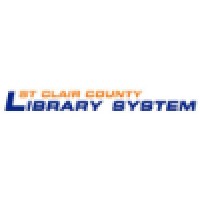Company Details
timberland-regional-library
168
534
51912
trl.org
0
TIM_2972038
In-progress

Timberland Regional Library District Company CyberSecurity Posture
trl.orgThe Timberland Regional Library (TRL) serves 29 locations in five southwest Washington State counties, covering nearly 7,000 square miles. TRL plays a leading role in helping people navigate a changing world: assisting them in finding educational and professional tools, learning, ideas, inspiration and support so they can achieve their goals.
Company Details
timberland-regional-library
168
534
51912
trl.org
0
TIM_2972038
In-progress
Between 700 and 749

 TRLD Global Score (TPRM)
TRLD Global Score (TPRM)XXXX

Description: TRL experienced data security breach involving questionable access to one of its workers' email accounts. The forensic investigation concluded that there was evidence of unauthorized access to two (2) TRL employees’ email accounts spanning from August 21, 2020, through January 25, 2021. The investigation identified the existence of limited personal information within these mailboxes, including dates of birth.
Description: The Washington State Office of the Attorney General reported a data breach involving Timberland Regional Library on May 5, 2021. The breach occurred on August 21, 2020, and was a result of a phishing cyberattack affecting 26,209 residents. Information compromised included names, Social Security Numbers, driver's license numbers, full dates of birth, and medical information.


No incidents recorded for Timberland Regional Library District in 2025.
No incidents recorded for Timberland Regional Library District in 2025.
No incidents recorded for Timberland Regional Library District in 2025.
TRLD cyber incidents detection timeline including parent company and subsidiaries

The Timberland Regional Library (TRL) serves 29 locations in five southwest Washington State counties, covering nearly 7,000 square miles. TRL plays a leading role in helping people navigate a changing world: assisting them in finding educational and professional tools, learning, ideas, inspiration and support so they can achieve their goals.


Our mission: Enriching the community through lifelong learning and discovery. The Allen County Public Library provides unlimited education, entertainment and information to the people of Allen County, Indiana and beyond. Working together, staff at our 15 locations offer physical and digital materia

San Mateo County Libraries is a Joint Powers Authority that comprises the cities of Atherton, Belmont, Brisbane, East Palo Alto, Foster City, Half Moon Bay, Millbrae, Pacifica, Portola Valley, San Carlos, Woodside, and the unincorporated areas of San Mateo County. We ignite growth through transforma

The Penn Libraries serves the world-class faculty and students of Penn’s 12 schools. We partner with communities at Penn and beyond to produce, preserve, and provide access to knowledge. Together we build dynamic resources, tools, and expertise that inspire critical inquiry and creative expression.

St. Clair County Library System strives to provide valuable service to our community and to visitors. Our Mission Statement is: Connecting You to a World of Information. The St. Clair County Library System serving a population over 170,000 with eleven branch locations, continues its tradition o

The Rochester (NY) Public Library is a system of eleven libraries (the Central Library in downtown Rochester and ten urban neighborhood branches) serving as a vital resource to the Finger Lakes and Western New York region. Our libraries foster life-long learning, personal enrichment, and prosperous

THE LIBRARY RCS Community Library is an independent, 501(c)3 nonprofit organization serving the residents of the Ravena-Coeymans-Selkirk Central School District in southeastern Albany County, New York State. Its service area includes the southern part of the Town of Bethlehem (Selkirk, South Be
.png)
ServiceNow Inc. is reportedly in advanced talks to acquire Veza Inc., a startup with an identity management platform of the same name.
A 15-year-old known online as “Rey” has been allegedly identified as a key figure in Scattered LAPSUS$ Hunters (SLSH), a hacking group said...
Thinking about whether Palo Alto Networks is a buy right now? If you have even a hint of curiosity about the stock's value,...
By Juliet ETEFE ([email protected]) Virtual Infosec Africa (VIA), in partnership with global cybersecurity firm Exabeam, has launched Ghana's...
Mohit Chawla, Deputy Inspector General (DIG) of Himachal Pradesh Police, has been honoured with the Chief Information Security Officer...
CINCINNATI (WXIX) -As Black Friday weekend approaches, cybersecurity experts are warning shoppers about increased online scams targeting...
There have been a lot of updates in privacy and cybersecurity in the last month. Read on to find out what they are.
As the social media ban for kids under 16 approaches, popular messaging app Snapchat says young people will be able to verify their age by...

Explore insights on cybersecurity incidents, risk posture, and Rankiteo's assessments.
The official website of Timberland Regional Library District is https://www.trl.org/.
According to Rankiteo, Timberland Regional Library District’s AI-generated cybersecurity score is 736, reflecting their Moderate security posture.
According to Rankiteo, Timberland Regional Library District currently holds 0 security badges, indicating that no recognized compliance certifications are currently verified for the organization.
According to Rankiteo, Timberland Regional Library District is not certified under SOC 2 Type 1.
According to Rankiteo, Timberland Regional Library District does not hold a SOC 2 Type 2 certification.
According to Rankiteo, Timberland Regional Library District is not listed as GDPR compliant.
According to Rankiteo, Timberland Regional Library District does not currently maintain PCI DSS compliance.
According to Rankiteo, Timberland Regional Library District is not compliant with HIPAA regulations.
According to Rankiteo,Timberland Regional Library District is not certified under ISO 27001, indicating the absence of a formally recognized information security management framework.
Timberland Regional Library District operates primarily in the Libraries industry.
Timberland Regional Library District employs approximately 168 people worldwide.
Timberland Regional Library District presently has no subsidiaries across any sectors.
Timberland Regional Library District’s official LinkedIn profile has approximately 534 followers.
Timberland Regional Library District is classified under the NAICS code 51912, which corresponds to Libraries and Archives.
No, Timberland Regional Library District does not have a profile on Crunchbase.
Yes, Timberland Regional Library District maintains an official LinkedIn profile, which is actively utilized for branding and talent engagement, which can be accessed here: https://www.linkedin.com/company/timberland-regional-library.
As of November 28, 2025, Rankiteo reports that Timberland Regional Library District has experienced 2 cybersecurity incidents.
Timberland Regional Library District has an estimated 1,268 peer or competitor companies worldwide.
Incident Types: The types of cybersecurity incidents that have occurred include Breach and Cyber Attack.
Title: TRL Email Account Breach
Description: TRL experienced a data security breach involving questionable access to one of its workers' email accounts. The forensic investigation concluded that there was evidence of unauthorized access to two (2) TRL employees’ email accounts spanning from August 21, 2020, through January 25, 2021. The investigation identified the existence of limited personal information within these mailboxes, including dates of birth.
Type: Data Breach
Attack Vector: Email Account Compromise
Vulnerability Exploited: Unauthorized Access
Title: Data Breach at Timberland Regional Library
Description: The Washington State Office of the Attorney General reported a data breach involving Timberland Regional Library on May 5, 2021. The breach occurred on August 21, 2020, and was a result of a phishing cyberattack affecting 26,209 residents. Information compromised included names, Social Security Numbers, driver's license numbers, full dates of birth, and medical information.
Date Detected: 2021-05-05
Date Publicly Disclosed: 2021-05-05
Type: Data Breach
Attack Vector: Phishing
Common Attack Types: The most common types of attacks the company has faced is Breach.

Data Compromised: Personal information, Dates of birth
Systems Affected: email accounts

Data Compromised: Names, Social security numbers, Driver's license numbers, Full dates of birth, Medical information
Commonly Compromised Data Types: The types of data most commonly compromised in incidents are Personal Information, Dates Of Birth, , Names, Social Security Numbers, Driver'S License Numbers, Full Dates Of Birth, Medical Information and .

Entity Name: Timberland Regional Library
Entity Type: Public Library
Industry: Public Services
Location: Washington State
Customers Affected: 26209

Type of Data Compromised: Personal information, Dates of birth
Personally Identifiable Information: dates of birth

Type of Data Compromised: Names, Social security numbers, Driver's license numbers, Full dates of birth, Medical information
Number of Records Exposed: 26209
Sensitivity of Data: High

Source: Washington State Office of the Attorney General
Date Accessed: 2021-05-05
Additional Resources: Stakeholders can find additional resources on cybersecurity best practices at and Source: Washington State Office of the Attorney GeneralDate Accessed: 2021-05-05.

Investigation Status: Completed
Most Recent Incident Detected: The most recent incident detected was on 2021-05-05.
Most Recent Incident Publicly Disclosed: The most recent incident publicly disclosed was on 2021-05-05.
Most Significant Data Compromised: The most significant data compromised in an incident were personal information, dates of birth, , names, Social Security Numbers, driver's license numbers, full dates of birth, medical information and .
Most Significant System Affected: The most significant system affected in an incident was email accounts.
Most Sensitive Data Compromised: The most sensitive data compromised in a breach were full dates of birth, dates of birth, personal information, driver's license numbers, medical information, names and Social Security Numbers.
Number of Records Exposed in Most Significant Breach: The number of records exposed in the most significant breach was 271.0.
Most Recent Source: The most recent source of information about an incident is Washington State Office of the Attorney General.
Current Status of Most Recent Investigation: The current status of the most recent investigation is Completed.
.png)
Angular is a development platform for building mobile and desktop web applications using TypeScript/JavaScript and other languages. Prior to versions 19.2.16, 20.3.14, and 21.0.1, there is a XSRF token leakage via protocol-relative URLs in angular HTTP clients. The vulnerability is a Credential Leak by App Logic that leads to the unauthorized disclosure of the Cross-Site Request Forgery (XSRF) token to an attacker-controlled domain. Angular's HttpClient has a built-in XSRF protection mechanism that works by checking if a request URL starts with a protocol (http:// or https://) to determine if it is cross-origin. If the URL starts with protocol-relative URL (//), it is incorrectly treated as a same-origin request, and the XSRF token is automatically added to the X-XSRF-TOKEN header. This issue has been patched in versions 19.2.16, 20.3.14, and 21.0.1. A workaround for this issue involves avoiding using protocol-relative URLs (URLs starting with //) in HttpClient requests. All backend communication URLs should be hardcoded as relative paths (starting with a single /) or fully qualified, trusted absolute URLs.
Forge (also called `node-forge`) is a native implementation of Transport Layer Security in JavaScript. An Uncontrolled Recursion vulnerability in node-forge versions 1.3.1 and below enables remote, unauthenticated attackers to craft deep ASN.1 structures that trigger unbounded recursive parsing. This leads to a Denial-of-Service (DoS) via stack exhaustion when parsing untrusted DER inputs. This issue has been patched in version 1.3.2.
Forge (also called `node-forge`) is a native implementation of Transport Layer Security in JavaScript. An Integer Overflow vulnerability in node-forge versions 1.3.1 and below enables remote, unauthenticated attackers to craft ASN.1 structures containing OIDs with oversized arcs. These arcs may be decoded as smaller, trusted OIDs due to 32-bit bitwise truncation, enabling the bypass of downstream OID-based security decisions. This issue has been patched in version 1.3.2.
Suricata is a network IDS, IPS and NSM engine developed by the OISF (Open Information Security Foundation) and the Suricata community. Prior to versions 7.0.13 and 8.0.2, working with large buffers in Lua scripts can lead to a stack overflow. Users of Lua rules and output scripts may be affected when working with large buffers. This includes a rule passing a large buffer to a Lua script. This issue has been patched in versions 7.0.13 and 8.0.2. A workaround for this issue involves disabling Lua rules and output scripts, or making sure limits, such as stream.depth.reassembly and HTTP response body limits (response-body-limit), are set to less than half the stack size.
Suricata is a network IDS, IPS and NSM engine developed by the OISF (Open Information Security Foundation) and the Suricata community. In versions from 8.0.0 to before 8.0.2, a NULL dereference can occur when the entropy keyword is used in conjunction with base64_data. This issue has been patched in version 8.0.2. A workaround involves disabling rules that use entropy in conjunction with base64_data.

Get company history
















Every week, Rankiteo analyzes billions of signals to give organizations a sharper, faster view of emerging risks. With deeper, more actionable intelligence at their fingertips, security teams can outpace threat actors, respond instantly to Zero-Day attacks, and dramatically shrink their risk exposure window.
Identify exposed access points, detect misconfigured SSL certificates, and uncover vulnerabilities across the network infrastructure.
Gain visibility into the software components used within an organization to detect vulnerabilities, manage risk, and ensure supply chain security.
Monitor and manage all IT assets and their configurations to ensure accurate, real-time visibility across the company's technology environment.
Leverage real-time insights on active threats, malware campaigns, and emerging vulnerabilities to proactively defend against evolving cyberattacks.




